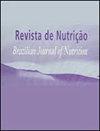Decision flowchart for food classification by the extension and purpose of industrial processing: update and practical application
IF 0.5
4区 医学
Q4 NUTRITION & DIETETICS
Revista De Nutricao-brazilian Journal of Nutrition
Pub Date : 2022-01-01
DOI:10.1590/1678-9865202235e210184
引用次数: 1
Abstract
ABSTRACT Objective To describe the development and update of an instrument for food categorisation according to the extension and purpose of industrial processing, and to test its practical application. Methods After updating the instrument based on a recent publication on the NOVA classification, it was applied by five researchers to a database of 108 food items. These items are part of a database of foods announced in the health-related sections of supermarket promotional circulars. The Cohen’s weighted kappa coefficient was calculated to determine intra-rater agreement; Fleiss’ kappa and Kendall’s coefficient were applied to determine inter-rater agreement. Results In the updated version, two classes of additives and eight substances considered by the most recent publication as specific to ultra-processed foods were added. The intra-rater agreement was 100% (p<0.001), indicating an “almost perfect” agreement; Fleiss’ agreement among all raters ranged from 74% to 97% (p<0.001), which represents an agreement that ranged from “strong” to “almost perfect”; Kendall’s W was higher than 0.93 (p<0.001) among all raters. Conclusion The updated instrument showed high agreement and proved to be a methodologically sound and applicable tool for the purpose of classifying foods by the extension and purpose of industrial processing.工业加工扩展与目的食品分类决策流程图:更新与实际应用
【摘要】目的根据工业加工的外延和目的描述食品分类仪器的开发和更新,并检验其实际应用情况。方法5名研究人员根据最新发表的NOVA分类文献对仪器进行了更新,并将其应用于108种食品的数据库中。这些食品是超市促销通告中与健康相关部分公布的食品数据库的一部分。计算Cohen 's加权kappa系数以确定内部一致性;采用Fleiss’kappa和Kendall’s系数来确定评分者间的一致性。结果在最新版本中,添加了两类添加剂和八种被最新出版物认为是超加工食品特有的物质。评分者之间的一致性为100% (p<0.001),表明“几乎完美”的一致性;所有评分者Fleiss的一致性在74%到97%之间(p<0.001),这代表了从“强烈”到“几乎完美”的一致性;所有评分者的Kendall’s W均大于0.93 (p<0.001)。结论更新后的仪器具有较高的一致性,是一种方法可靠、适用于工业加工延伸食品分类的工具。
本文章由计算机程序翻译,如有差异,请以英文原文为准。
求助全文
约1分钟内获得全文
求助全文
来源期刊
CiteScore
1.20
自引率
12.50%
发文量
24
审稿时长
6-12 weeks
期刊介绍:
Revista de Nutrição is former Revista de Nutrição da Puccamp, founded in 1988. It is a bimonthly publication every four months and it is of responsibility of the Centro de Ciências da Vida, da Pontifícia Universidade Católica de Campinas . It publishes articles that contribute to the study of Nutrition in its many sub-areas and interfaces; and is open to contributions of the national and international scientific communities.

 求助内容:
求助内容: 应助结果提醒方式:
应助结果提醒方式:


